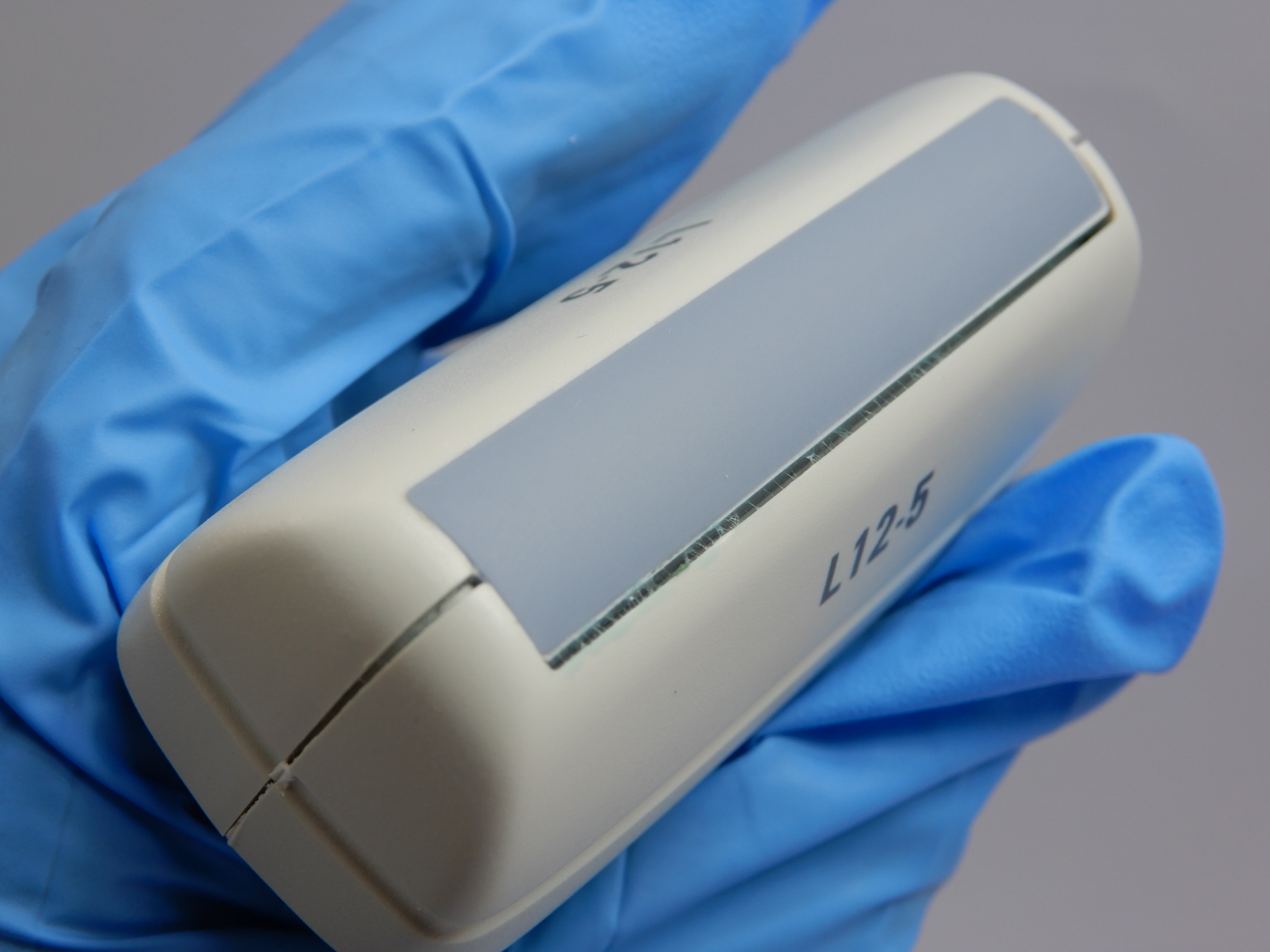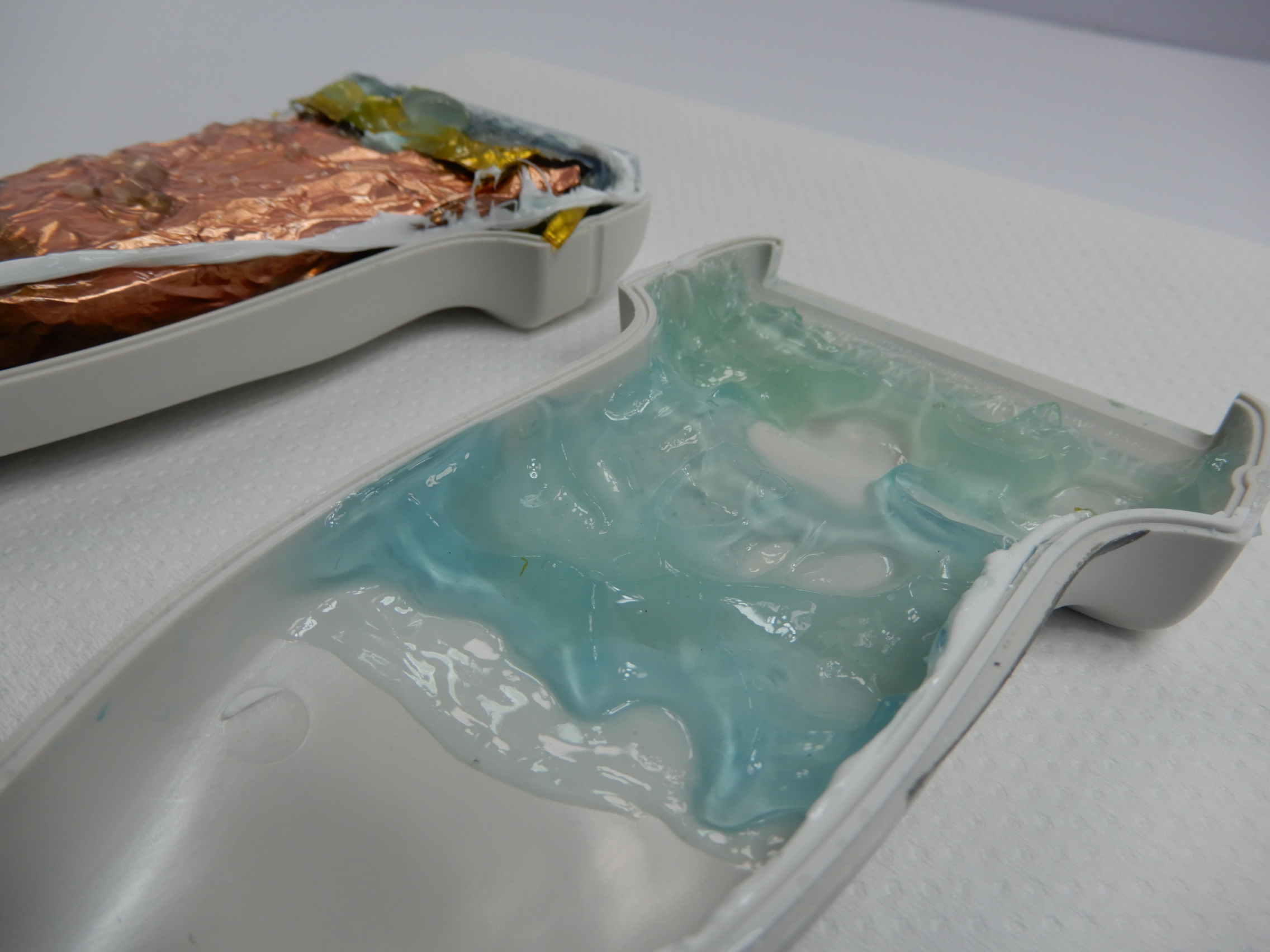
Did you know that even a minor drop can permanently warp the casing protecting your probe head? An unknown but significant risk of falls in ultrasound transducers is the force of being dropped distorting the plastic of your probe case which in turn can lead to the seams of the casing separating. This can pose various risks to the functionality of your probe, and the safety of those who come into contact with it.
As in the instance of this L12-5, seam separation can allow for fluid such as ultrasound gel to penetrate inside the casing and build up on the inside of your probe head – wreaking havoc on the delicate electronics and circuitry it is comprised of. While we could see a slight amount of ultrasound gel beading around the seams of this probe, nothing could have prepared us for the sheer amount of liquid collected inside the probe case, as seen below.

The danger of this is that it was almost completely undetectable from the outside; the gel only visible when the casing was pressed tightly together again. We aren’t quite sure how long the customer was using their probe in this condition but luckily it was brought into us before the issue could get worse.
Your probe head contains complex electronics which allow for the transmission and interpretation of ultrasonic waves communicated between probe head and machine. When the protective casing of your probe is compromised, this places a risk not only to the functionality of your probe, but also to the safety and wellbeing of your patients who are coming into contact with it. Your probe is the direct contact between the skin and the electrical current that runs through your ultrasound machine. Probes are designed to be electrically insulated to protect against the risks of electric shock. However, when this insulation, or housing, is compromised, it greatly increases these risks.

While we know that the fluid contained inside this L12-5 is just ultrasound gel, it is important also to note that other contaminants could penetrate through the gaps in the probe casing and build up completely unseen from the outside. This is a massive cross-contamination hazard especially in the event that a damaged probe was to come into contact with bodily fluids or infected tissue.
A small drop for your transducer head may not seem significant at the time, but it is important to have your probe evaluated as soon as possible to mitigate against hidden damage and other risks. Seam separation of your casing can seem minor but still result in extreme fluid ingress, bacteria build-up or an increased risk of electric shock to both you and your patient. Contact us for more information on these hazards and how to reduce the likelihood of this happening to your probe.
